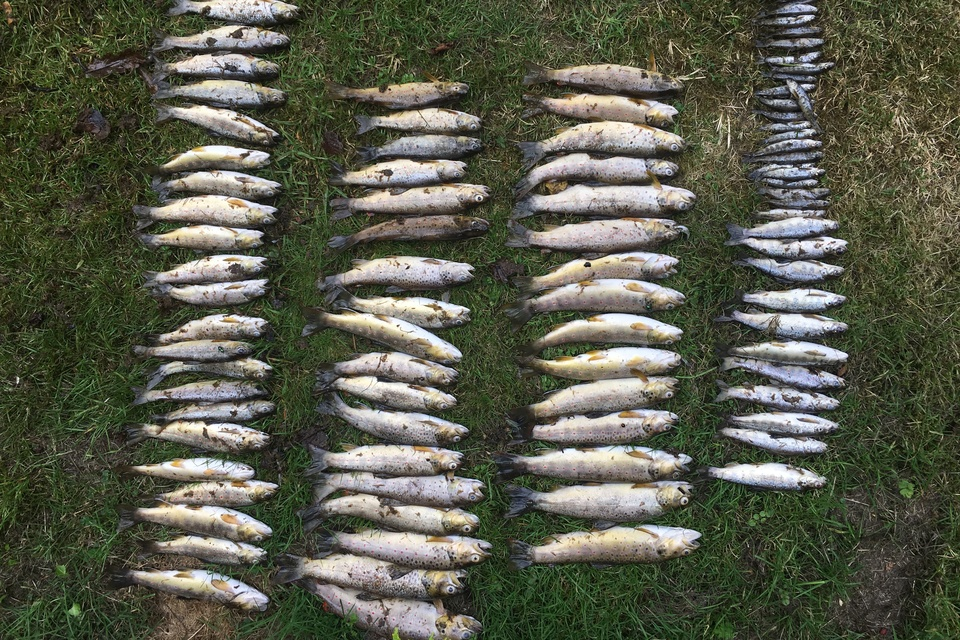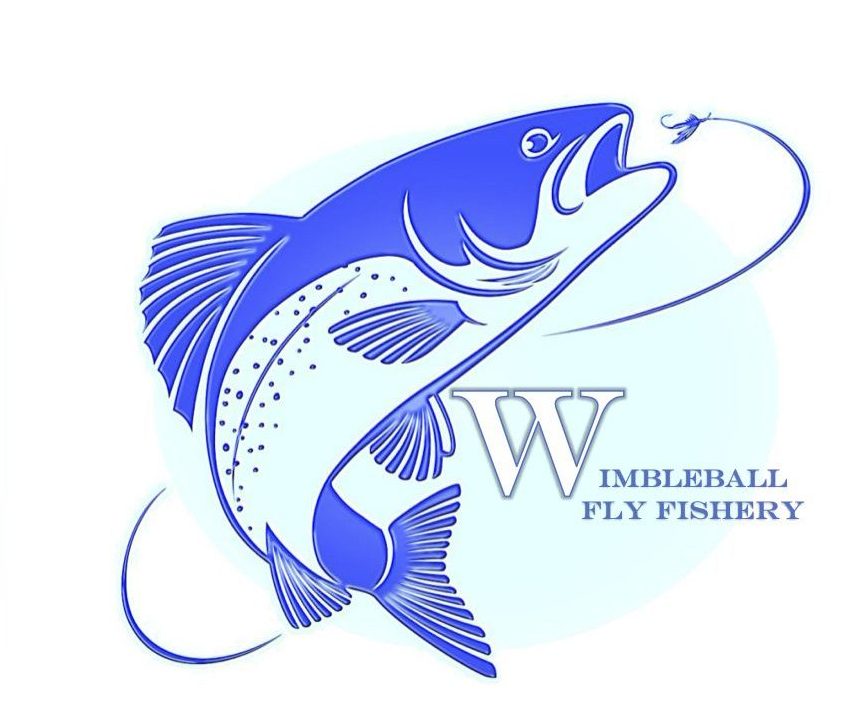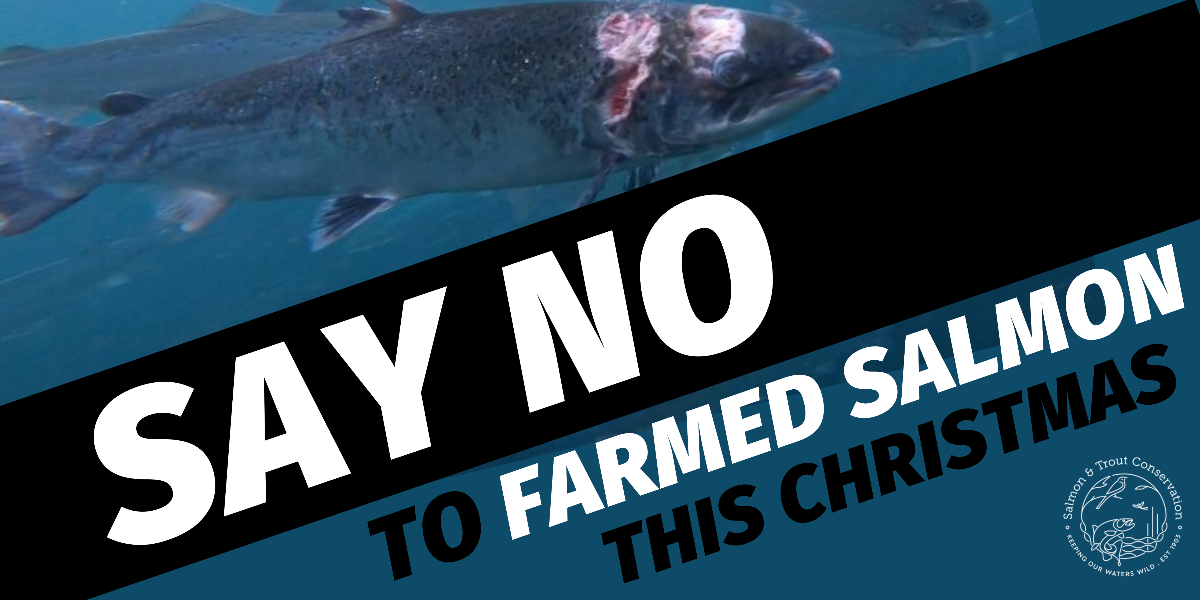
INVASIVE SPECIES _ADVICE
A Riverfly Monitoring volunteer alerted me to what he thought could have been a Killer Shrimp whilst carrying a survey on the River Torridge. I passed the details to our local E.A Fisheries officer who alerted the relevant bodies. Fortunately on this occasion it was a false alarm but the relevant bodies are always grateful of reports in their fight against invasive species that can devastate the local eco-system. The EA can be contacted via their Hotline – 0800 807060
www.nonnativespecies.org
KIller Shrimp Species Description
Scientific name: Dikerogammarus villosus AKA: Killer Shrimp
Native to: South-east Europe
Habitat: Still or flowing freshwater and brackish water, often among hard surfaces or vegetation.
A highly invasive shrimp, with only a few known populations in GB. A key ID feature is the presence of cone shaped protru- sions on the tail. Often larger than native freshwater shrimp species and sometimes with a striped appearance.
It is a voracious predator, killing invertebrates and small fish. It quickly dominates habitats it invades and can significantly alter their ecology.
It is tolerant of poor water quality and can survive in damp conditions for up to five days. It could therefore be spread in ballast water and also by people on kit used in the water, including an- gling gear, boats, kayaks and trailers. Good biosecurity is essential to reduce the risk of spread.
As a non-resident species it could be an offence to release or allow the escape of this species into the wild.
Suspected records of this species should be sent with a photograph to: [email protected]
Another species of concern is the top mouth gudgeon see information and links below.
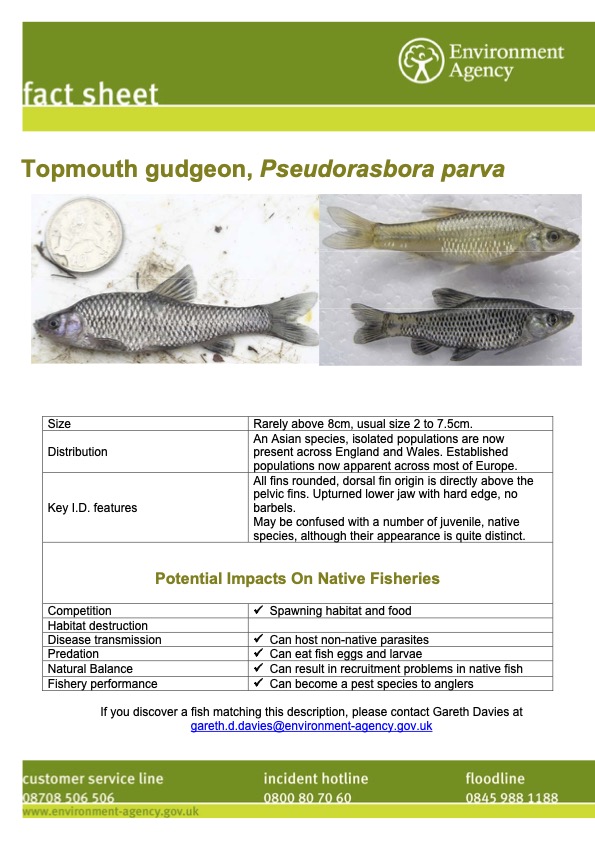
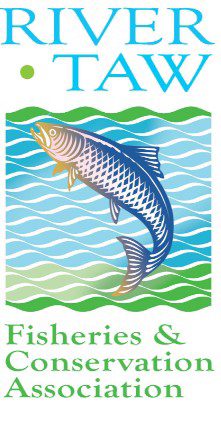
River Taw Fisheries & Conservation Association Urge Anglers support for petition
The River Taw Fisheries & Conservation Association are urging all anglers to support the petitions on the parliament UK website for adequate funding of the Environment Agency.
|
|
|
This petition asks the government to give more funding to the Environment Agency and to free it from overly business-friendly Government codes and guidance, so it can pursue and achieve its principal statutory objective to protect and enhance English rivers. The petition has 2 days left to run and needs support, please click on the link below |
South West Lakes Trout Fisheries Report November 2021
All of the South West Lakes Trust trout fisheries continue to be operated under strict Covid-19 restrictions, in line with the current Angling Trust and Government guidelines. At the time of writing the on-site permit huts are not open, so day tickets, season tickets, and boats should be pre-booked online (www.swlakestrust.org.uk/trout-fishing) or via the telephone. Water levels are now starting to rise to between 60% and 75% full (depending on site), while water temperatures continue to fall.
Fishing:
Kennick – The weather conditions have generally been very changeable, with some pleasant sunny days mixed with days of strong winds and heavy rain showers, while overall temperatures have remained mild for the time of year. There has been little surface insect activity, and fish have only risen to feed very occasionally in the early part of the month. Subsequently, most fish have been caught between one and six feet down on slow-sink or intermediate lines, with bank anglers catching the majority of fish. Fish have been well spread out around the lake, although Sycamore Wall, The Narrows, and Clampitts have been particularly popular. The usual selection of nymphs (Buzzers, Diawl Bach, Montanas, and Damsel Nymphs) and lure patterns (Orange Blob, Boobies, Cats Whisker, Kennick Killer, and Nomads) have produced the best sport, with Bibios, Shrimp, and Vivas also catching well. Sharif Adams (from Moretonhampstead) caught the best fish of the month with an impressive bag of six rainbows between 2 and 5lbs, using a Gold Damsel fished about a foot beneath the surface. Graham Roberts (from Totnes) caught three rainbows weighing in at 2lbs, 4lbs, and 4lb 4oz, as well as a 1lb brown; Bryan Parry (from Newton Abbot) caught rainbows of 2lb 8oz, 3lb, and 4lb, using a Damsel Nymph; Mick Megee (from Newton Abbot) caught seven rainbows to 3lb 8oz using a sinking line and slow retrieve. The final of the Lakes Trust’s ‘Best of the Best’ bank competition, supported by Snowbee UK, was held on 17 October – with twenty one anglers competing. Cornish angler Dave Johns won the competition (and £1000 prize cheque) with twelve fish weighing in at 25lb 2oz, Devon angler Andy Watson took second place with 15lb 12oz, and Andy Gooding won the prize for Heaviest Fish (3lb 2oz).
Siblyback – Although there has been little surface activity and few insects on the water, a few fish were caught early in the month on a dry static fished Black Hopper. Otherwise lures and sunk nymphs have been the patterns of choice (Red Matuka, Baby Doll, Viva, or Damsel Nymphs and Montanas), with an intermediate line producing the best results, and Crylla Bay the preferred location. Generally, fish caught have been between 1 and 2lb, with the best rainbow weighing in at 2lb 5oz caught by Nigel Muscelwate; Neil Barron caught a rainbow of 2lb 2oz.
Burrator – There was little surface insect activity over the month, and with the fish feeding sub-surface, generally intermediate lines with varying retrieval speeds proved to be the most successful method, with either a nymph (Montana, Damsel, or Diawl Bach) or lure pattern (Muddler, Leach, Orange Blob,or Kennick Killer) – although a Zonker fished on a floating line and pulled fast did result in a few fish caught. Longstone Point, Pig Trough Bay, and Sheepstor proved to be the most productive locations. The best fish of the month (and the best brown of the season) was caught by Al Lawson (from Plymouth) – a beautiful 4lb fish, using a Blue Flash Damsel on an intermediate line. Kevin Sellar (from Plymouth) caught a bag of seven rainbows to 2lb, using Damsel and Orange Blob patterns, while Steven Carter (from Tavistock) caught four rainbows to 2lb on a floating line and fast retrieve.
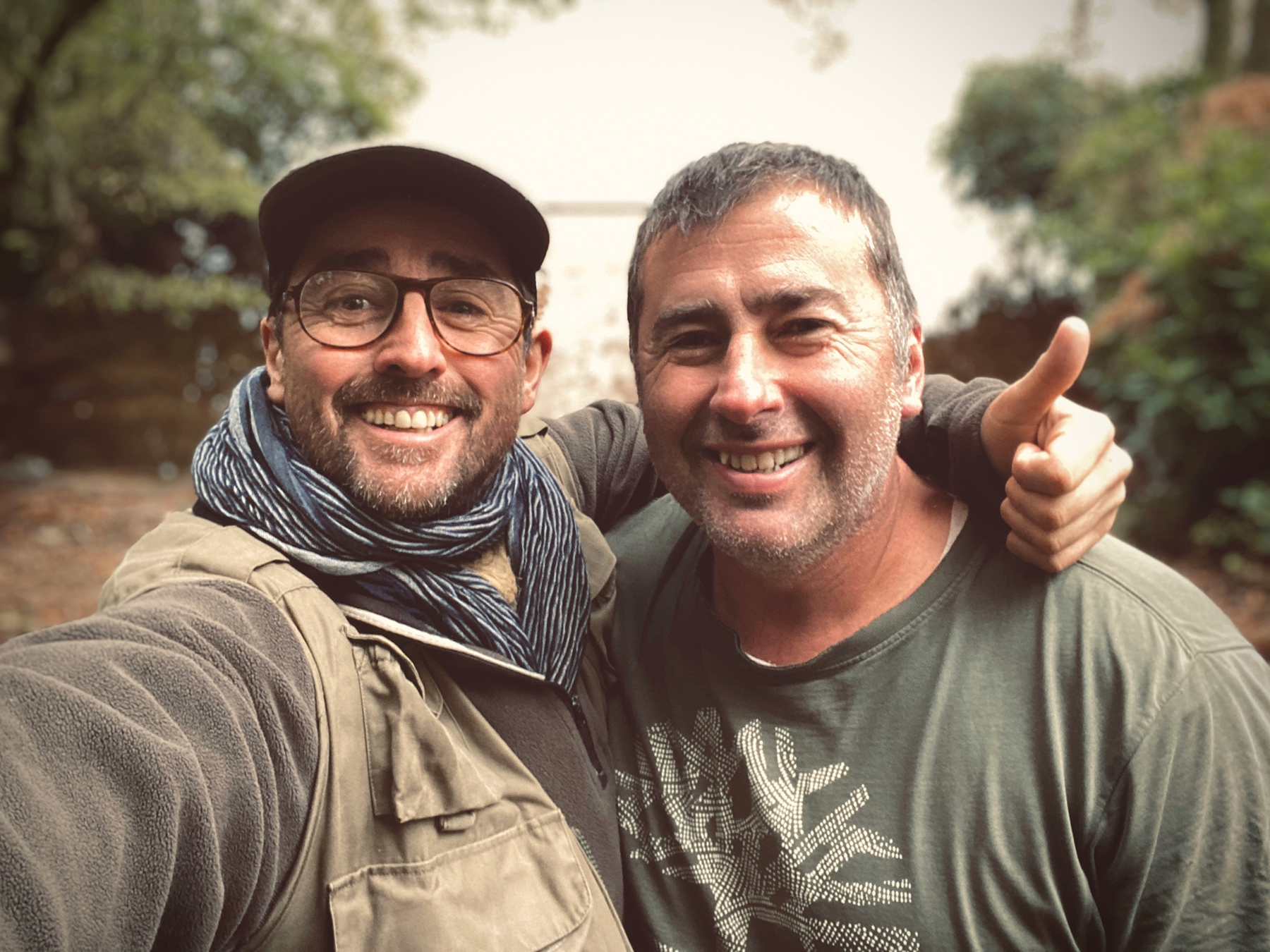
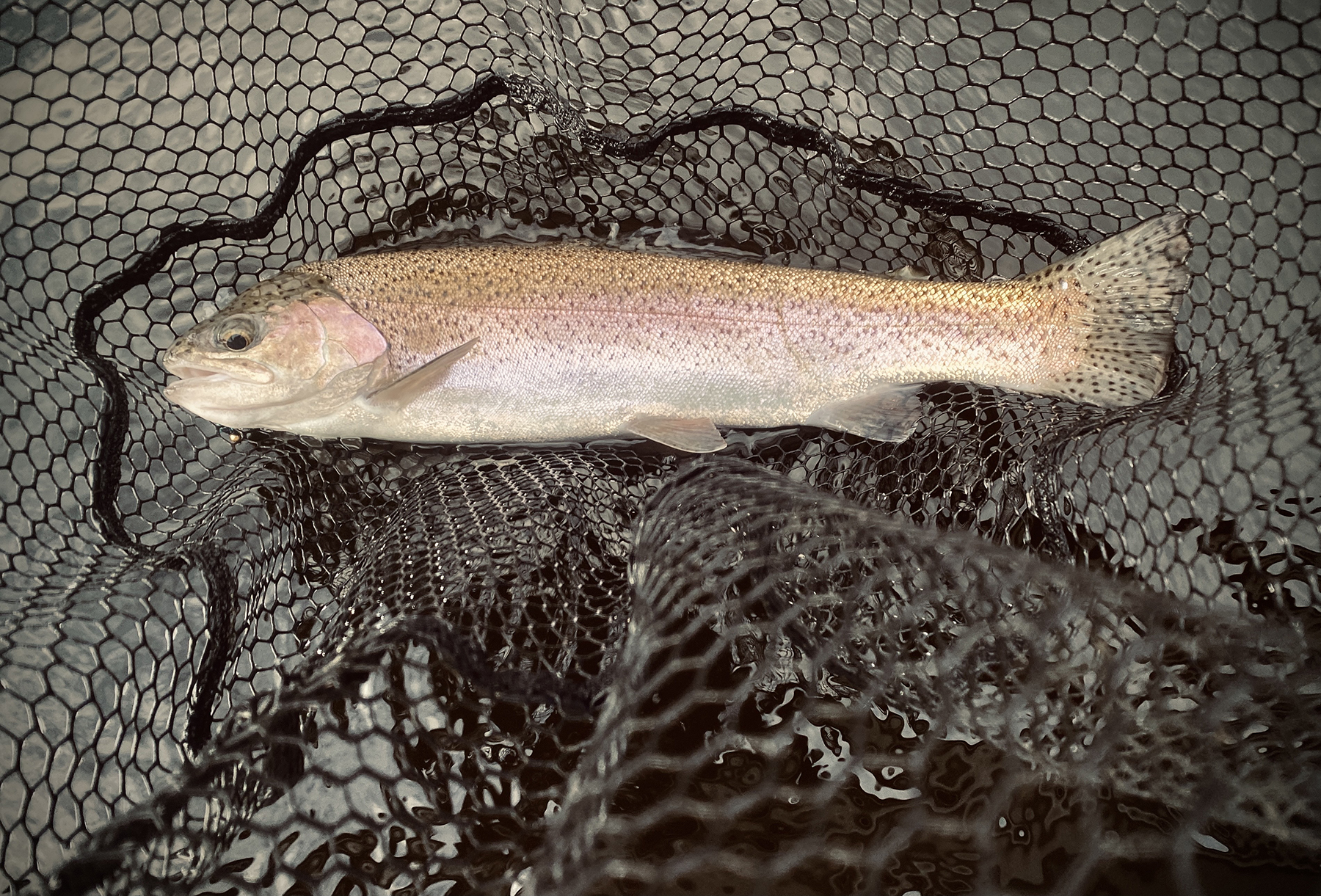
Stithians – Fish continue to be well spread out around the water, with most locations producing fish, although Goonlaze, Pipe Bay, and Dam Bank are all worthy of mention. With insect activity on the surface sparse, most fish have been caught on intermediate or sinking lines, although the occasional fish could be tempted by a dry Daddy, Deer Hair Sedge or Black Gnat on a floating line. With the majority of fish being caught subsurface, lure patterns such as Orange Blob, Cats Whisker, Black Cormorants, Boobies, and Fritz patterns produced the best catches. John Henderson (from Falmouth) caught the best fish of the month – a 3lb 8oz rainbow, as part of a bag of five rainbows using small orange gel blobs and mini orange boobies; Phil Messenger-Roberts (from St Austell) caught six rainbows to 3lb using black and white and green fritz patterns; Clive Pearce caught five rainbows to 3lb.
South West Lakes Trust’s brown trout waters (Roadford, Colliford, and Fernworthy) have now closed for the season, to reopen in March 2022.
Please visit the website (www.swlakestrust.org.uk/trout-fishing) for details on ticket prices, fishery information, clubs, competitions, and boat availability.
Chris Hall (November 2021)
ENDS
For more information, please contact:
Annabel Underwood
Communications and Marketing Manager
South West Lakes Trust
01566 771930
Barnstaple & District Angling Association – Launch New Website
Barnstaple & District Angling Association held their AGM on line consulting the membership via email. The club Chairman John Webber reported on a very successful year with positive developments on the upkeep of the waters on the Lower Taw and at South Aller. The club launched it new website last Tuesday evening that will provide a valuable working link to the membership. http://www.barnstapledistrictangling.co.uk
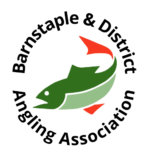
The B&DAA formed in 1941 is one of North Devon’s longest running clubs and it is good to see that it is thriving thanks to the dedication of its long running committee. The club gave special thanks to Colin Ashby who has been membership secretary for at least 25years. Don Hearn and Alan Jump also deserve credit for the work that they have undertaken on the club waters.
Click home to visit :-
Autumn Trout Sport at Bulldog
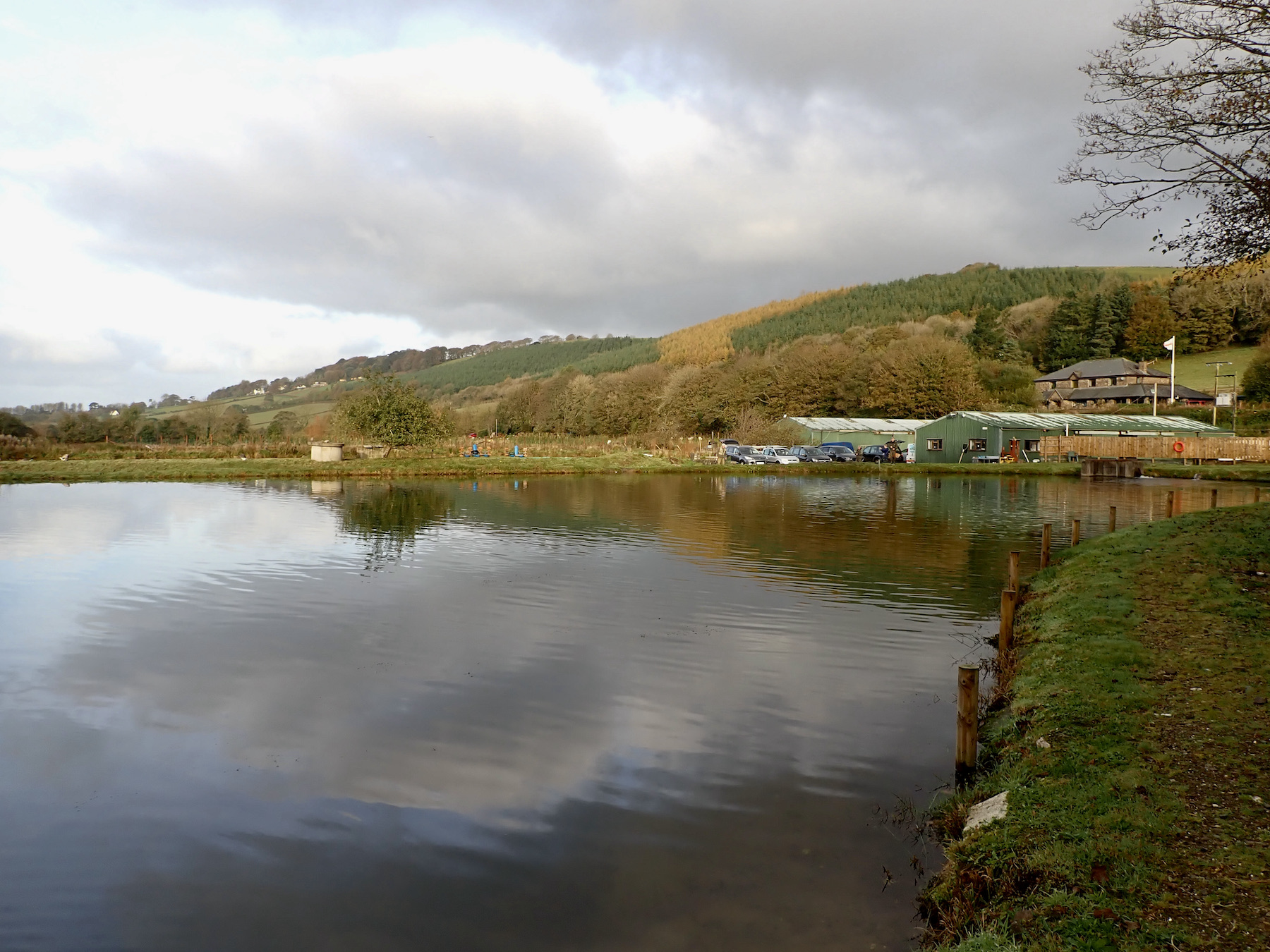
I joined eight members of South Molton and District Angling Club at Bulldog Fishery where a good days sport was enjoyed. It was a surprisingly mild and sunny day for early November and several good sized trout could be seen cruising in the clear water.
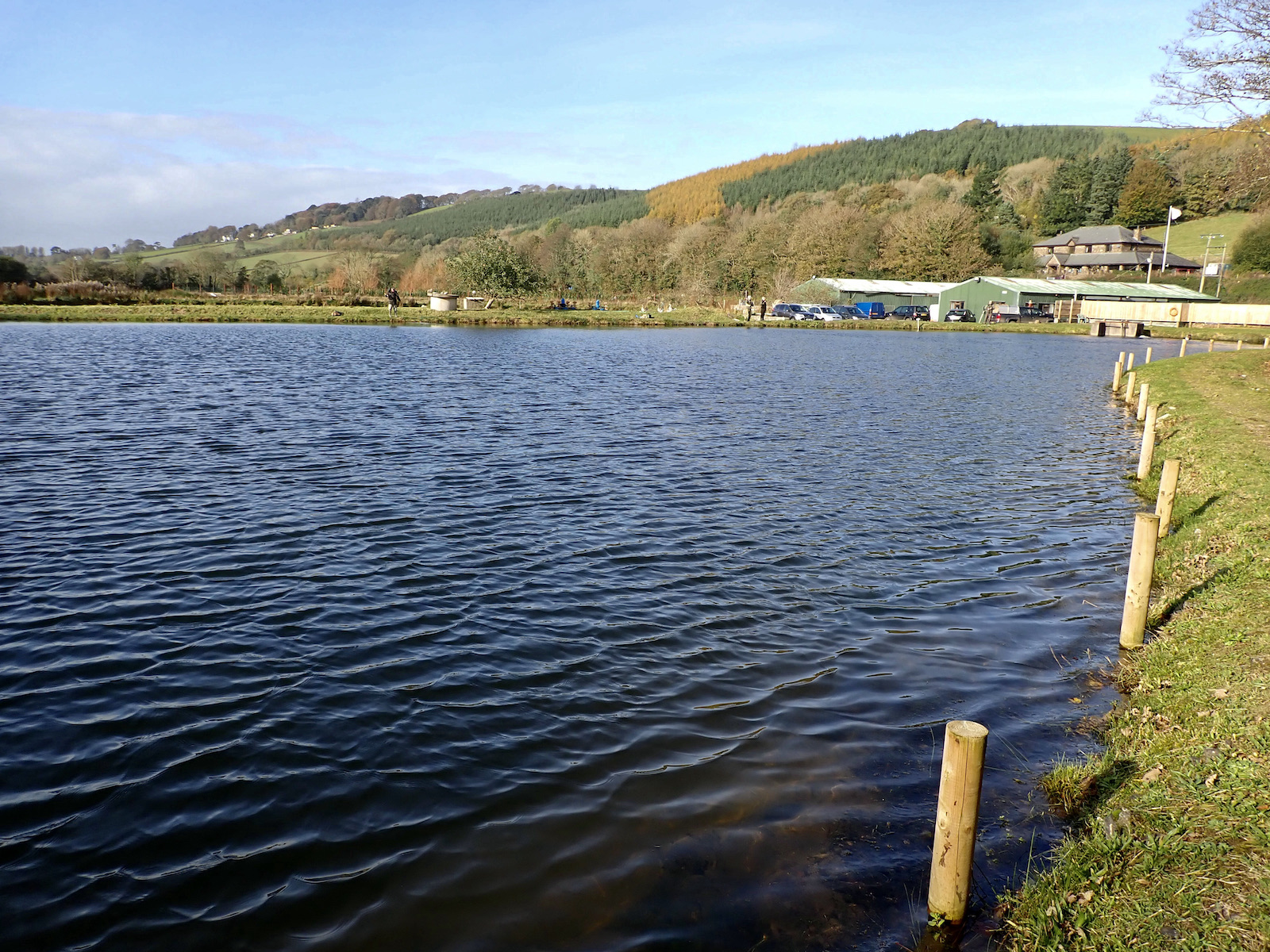
Bulldog is a small water and eight members is close to the maximum comfortable number for the water. But with all members being friends and it being very much a social event the fact that lines came close at times didn’t matter.
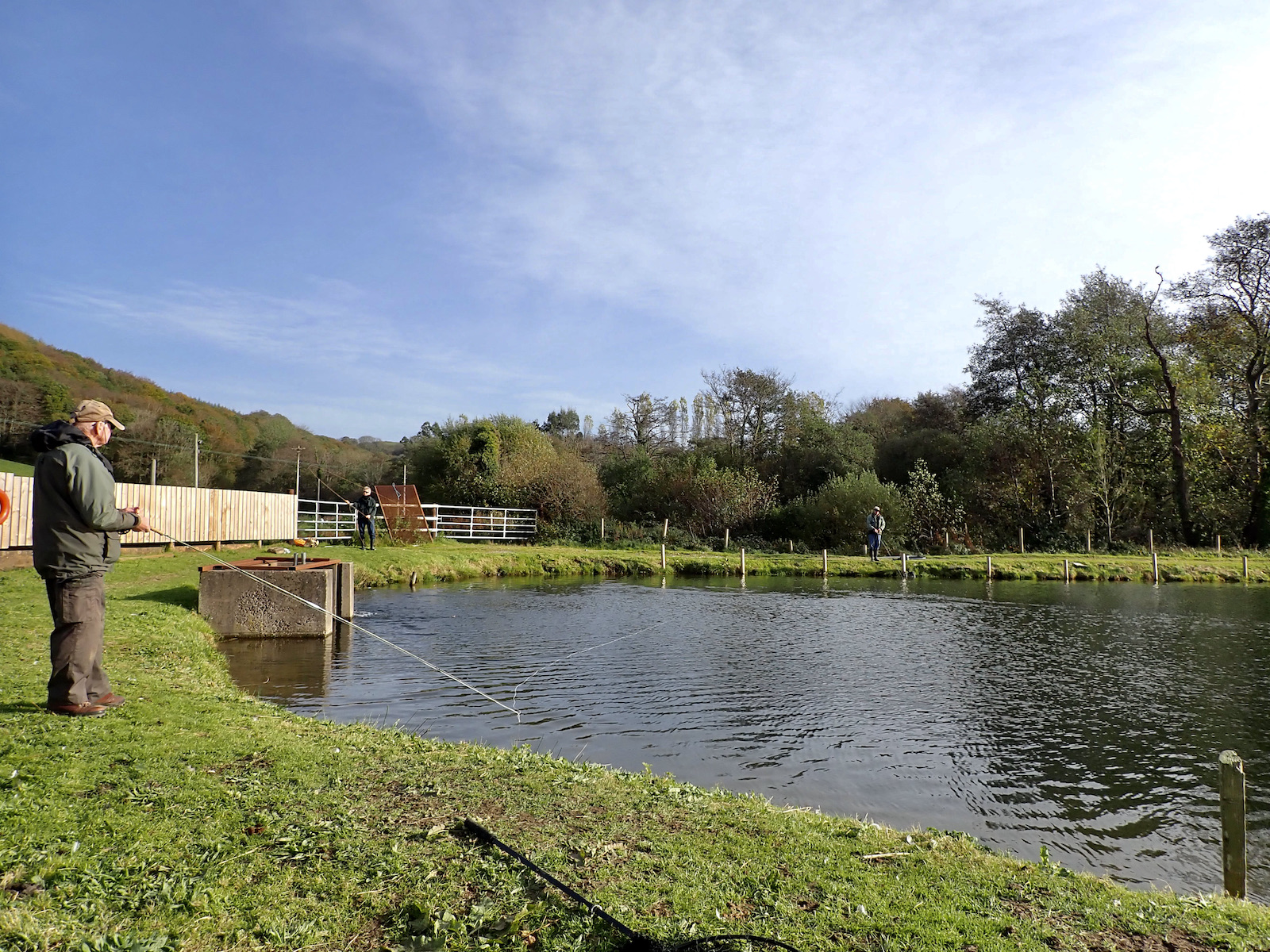
The hotspot seemed to be close to the lake inlet where several fish were showing including a large fish well into double figures. Small imitative patterns seemed to be the way to go with several fish tempted on montana nymphs. My first fish of the day succumbed to this pattern with a further three falling to small gold head PT nymphs.
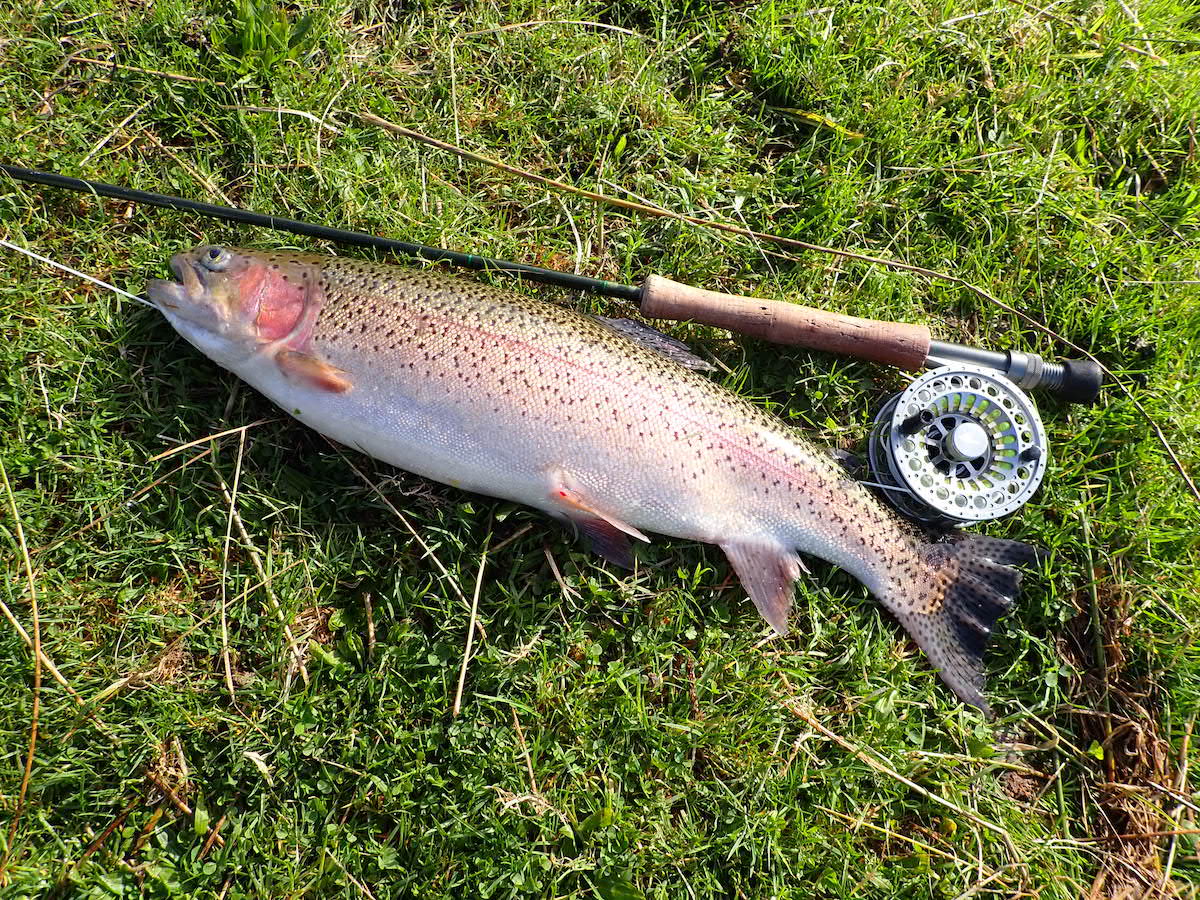
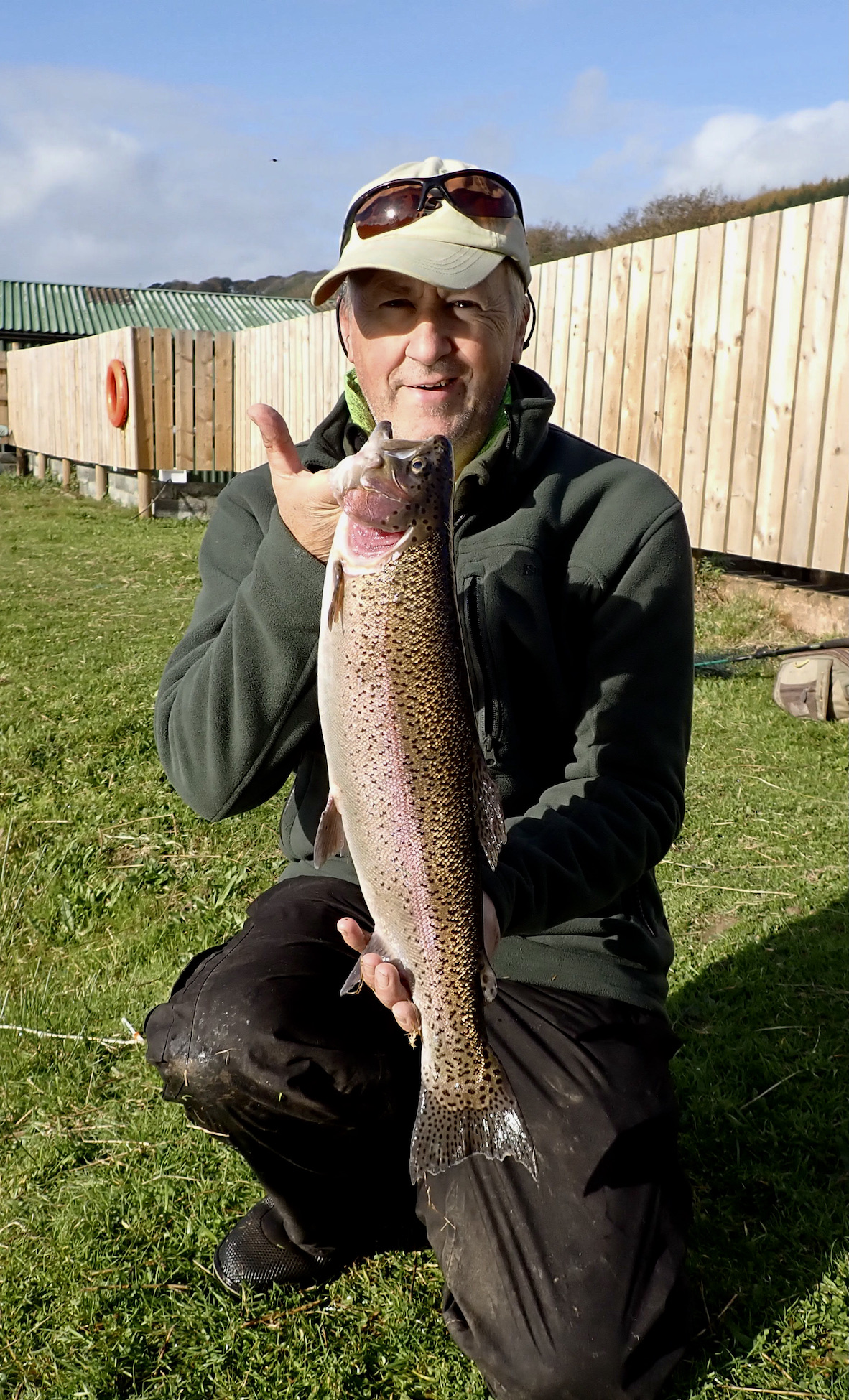
I believe at least half the members ended the day with four fish limit bags with most fish weighing between 3lb and 5lb.
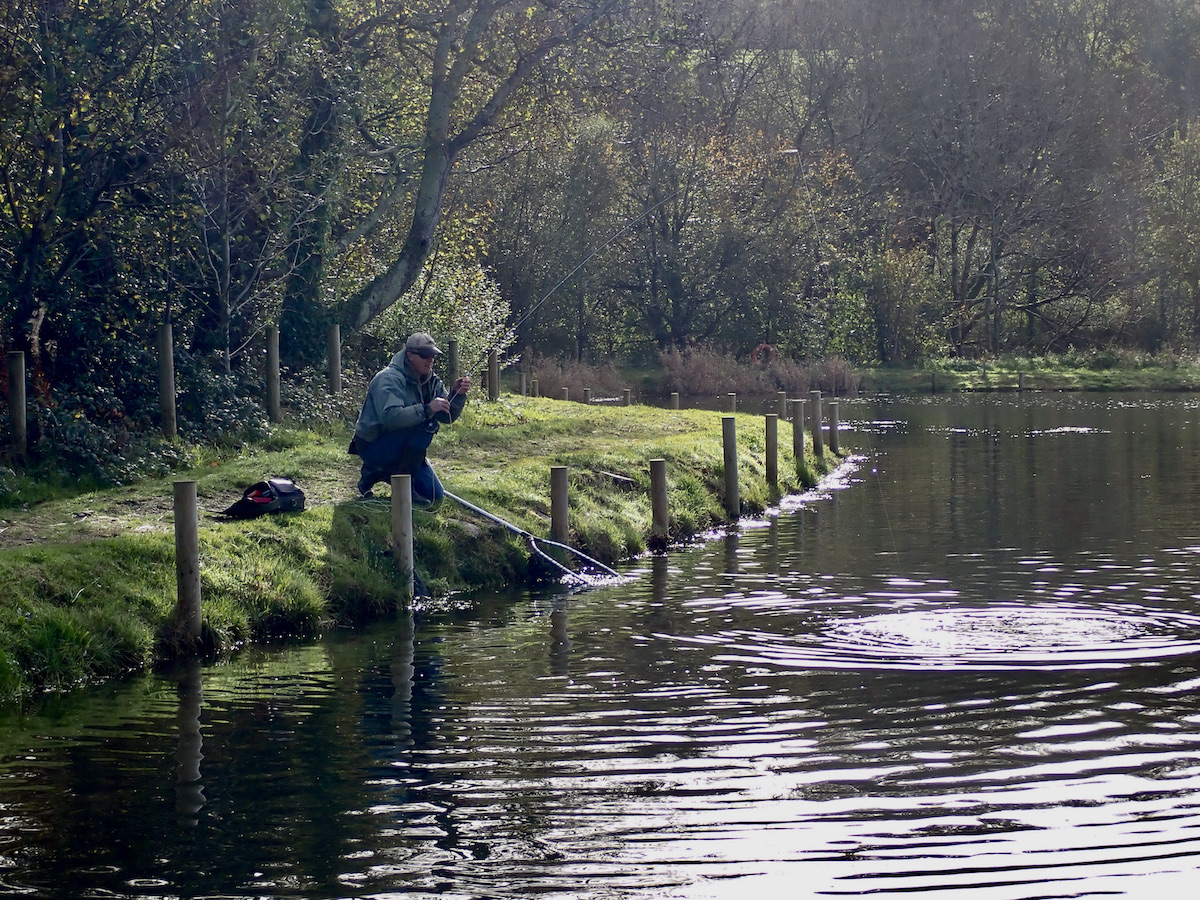
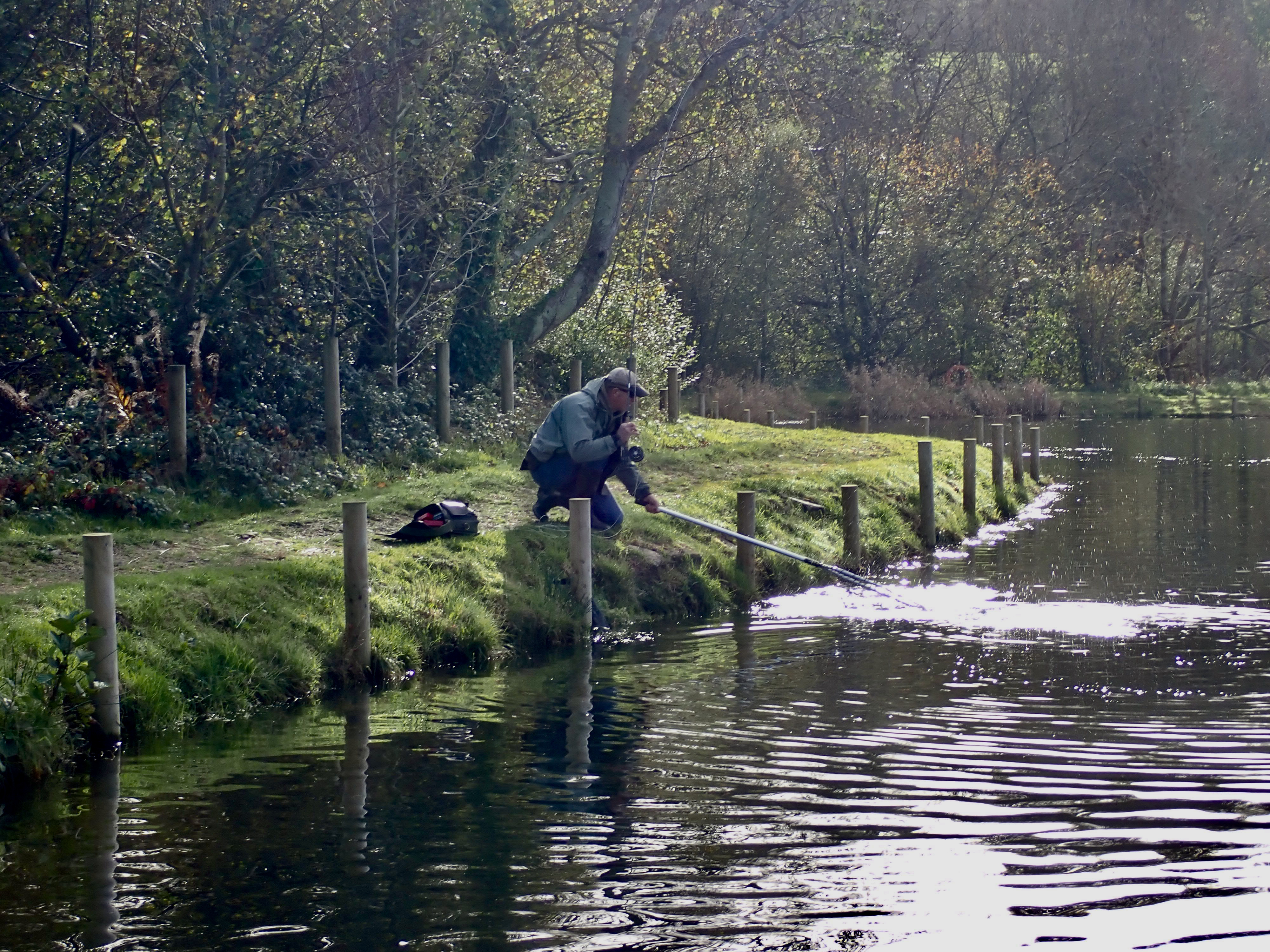
Bulldog is an intimate water that is stocked with rainbows averaging over 3lb and browns into double figures. It is a perfect winter venue that offers good sport and a good chance of a double figure fish.
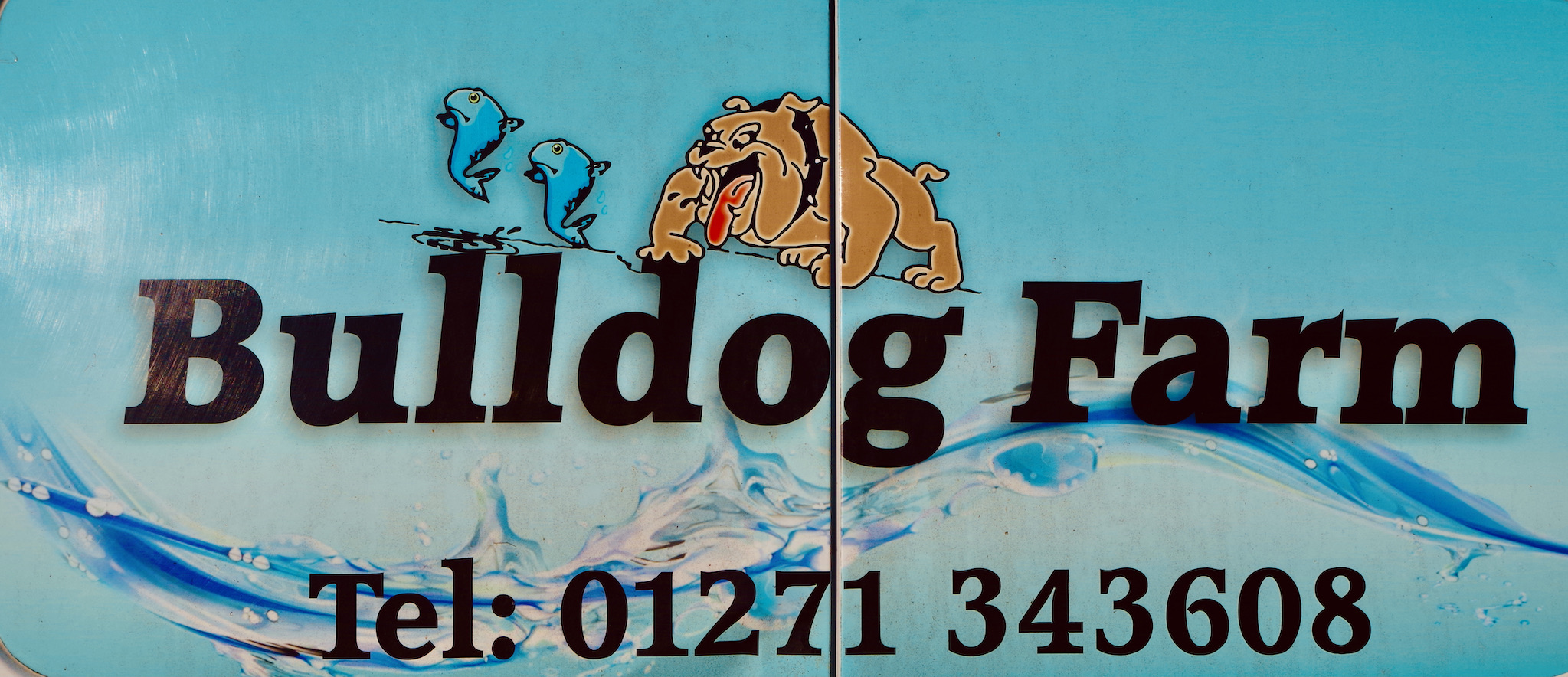
Quay Sports fishing Tackle & bait Store have purchased North Devon Tackle.
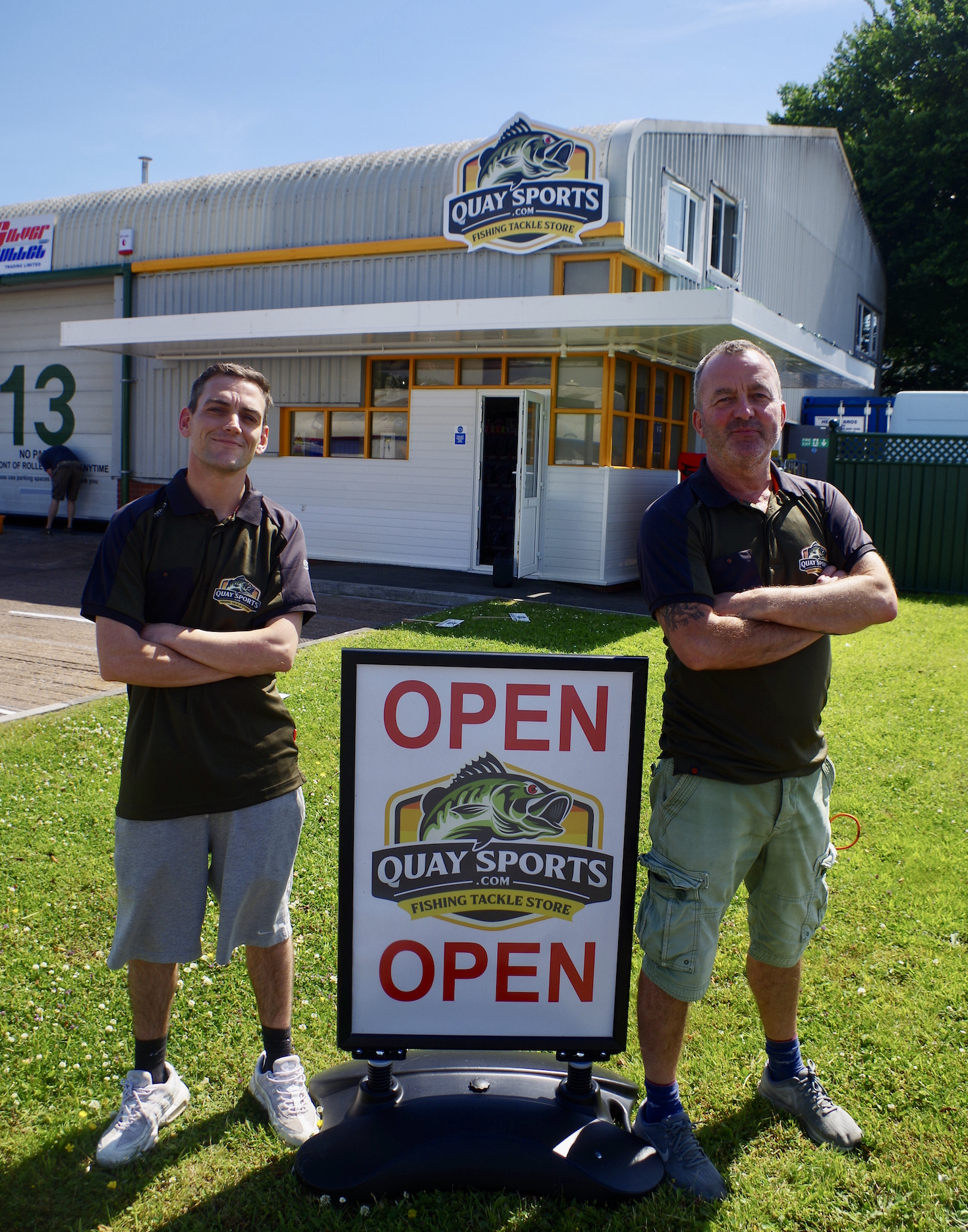
Quay Sports fishing Tackle & bait Store have recently purchased North Devon Tackle.
An agreement was reached last week and the North Devon Tackle store will be closed as from Monday,November 1st.
All of the popular products and brands that were previously stocked in North Devon Tackle will be available very soon in the Quay Sports store.
A Quay Sports team member said, “We aim to offer the same great service and choice of products that North Devon Tackle have over the past 6 years and would like to wish Jamie all the best for the future.”
The move comes at a time when the High Street continues to contract with larger stores on the edge of town offering free parking and a wider range of products in larger premises. As angling’s popularity continues to grow it is great that a shop front style shop is available for Barnstaple’s anglers.
North Devon Angling News wish Jamie all the best for the future. The advice he gave freely to local anglers was very much appreciated.
BEAVERS ON THE WAY TO NORTH DEVON?

THE CHALLENGE OF WIMBLEBALL
Late October and I am excited to be heading across Exmoor on a mild murky morning to target the hard fighting trout of Wimbleball. I am meeting with Snowbee Ambassador Jeff Pearce.
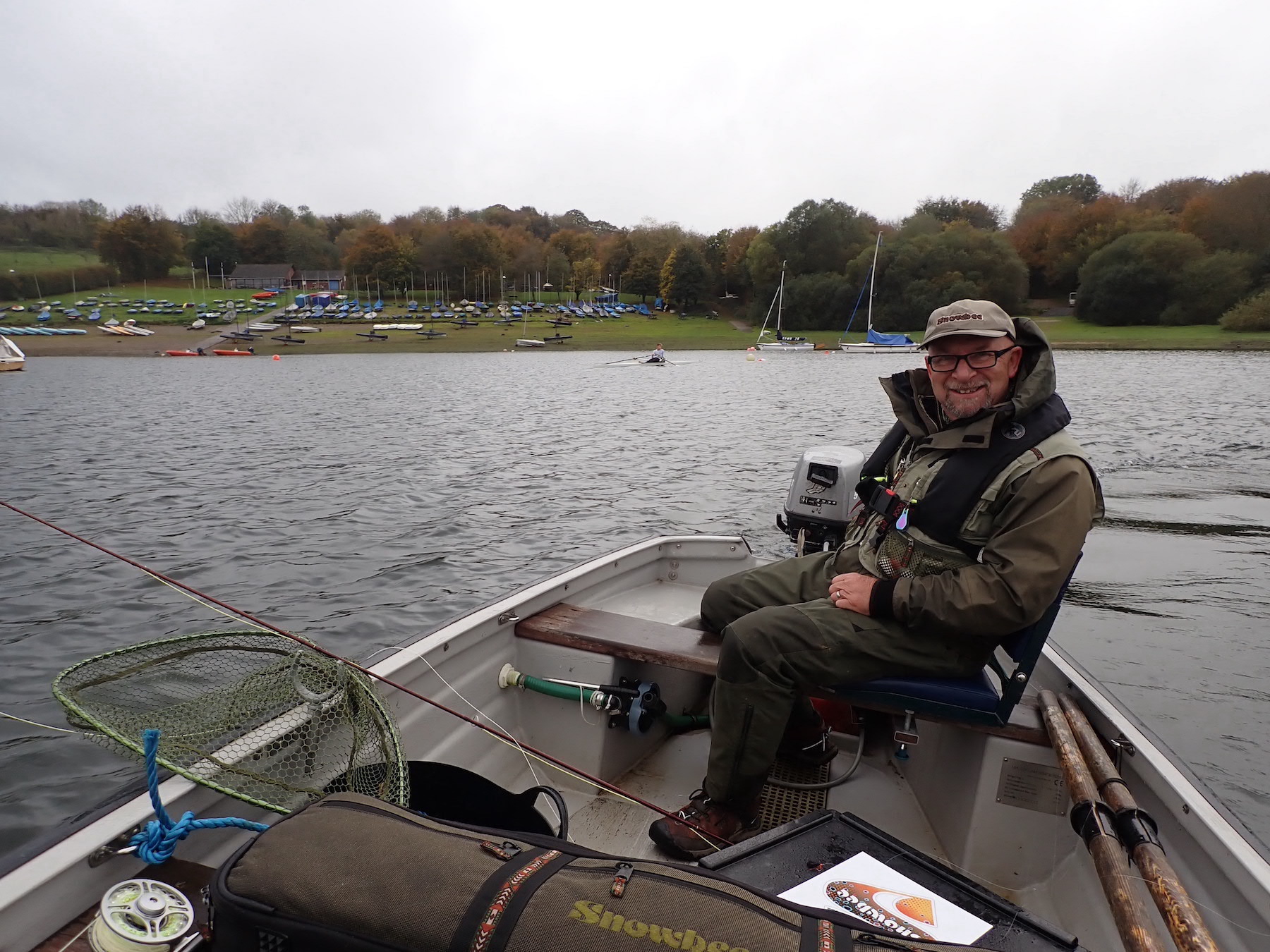
The news reports from the lake indicate that catches have been good in recent weeks with the lower Autumn temperatures encouraging the trout to go on the feed. Jeff had fished a match the previous day when some competitors had registered catches into the lower teens.
We were greeted at the boat pontoon by the ever helpful and enthusiastic Trevor who chatted about the day to day complexities of running the fishery and where we might find a few trout.
As we chugged out onto the lake it was soon apparent that the wind was going to be a bit challenging. A force 4 to 6 South Westerly was whipping up white horses on the water. We set up a drogue to slow the drift but even with this in place progress was brisk.
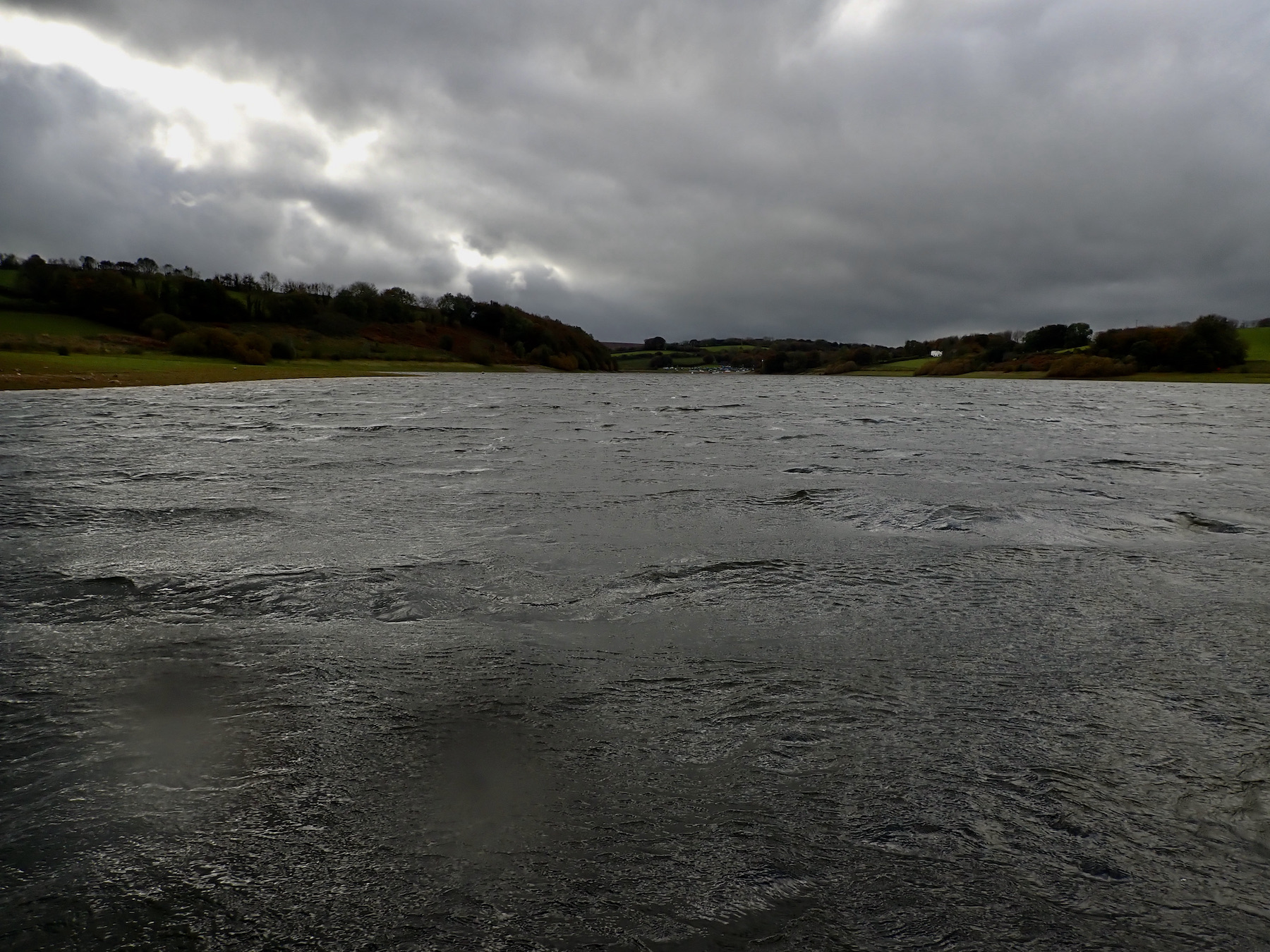
We commenced drifting the narrows casting our offerings close to the shoreline. Jeff was into a hard fighting rainbow first drift. Whilst I managed a couple of tugs. A repeat drift brought a second rainbow for Jeff and yet more pulls and tugs for myself.
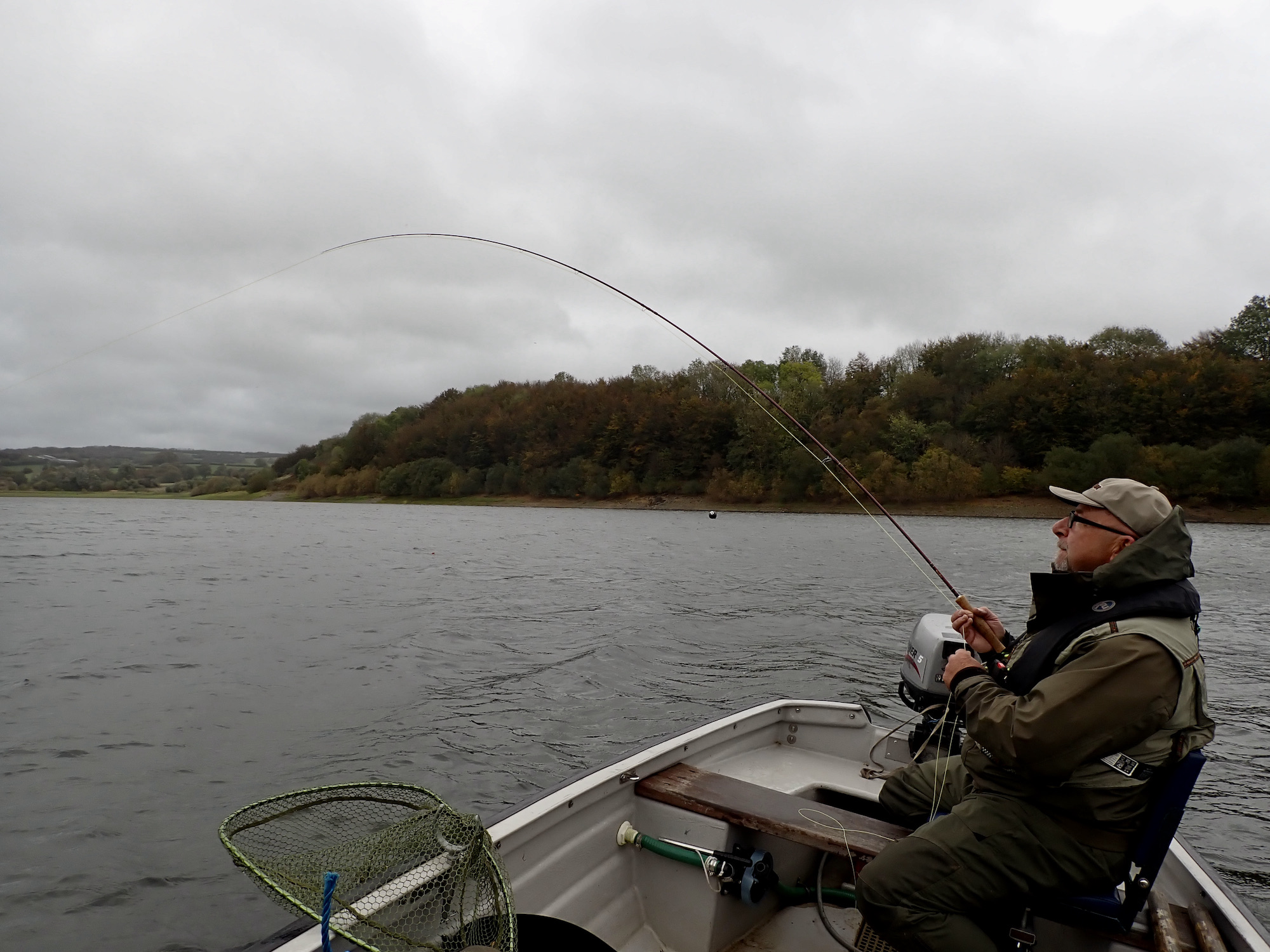
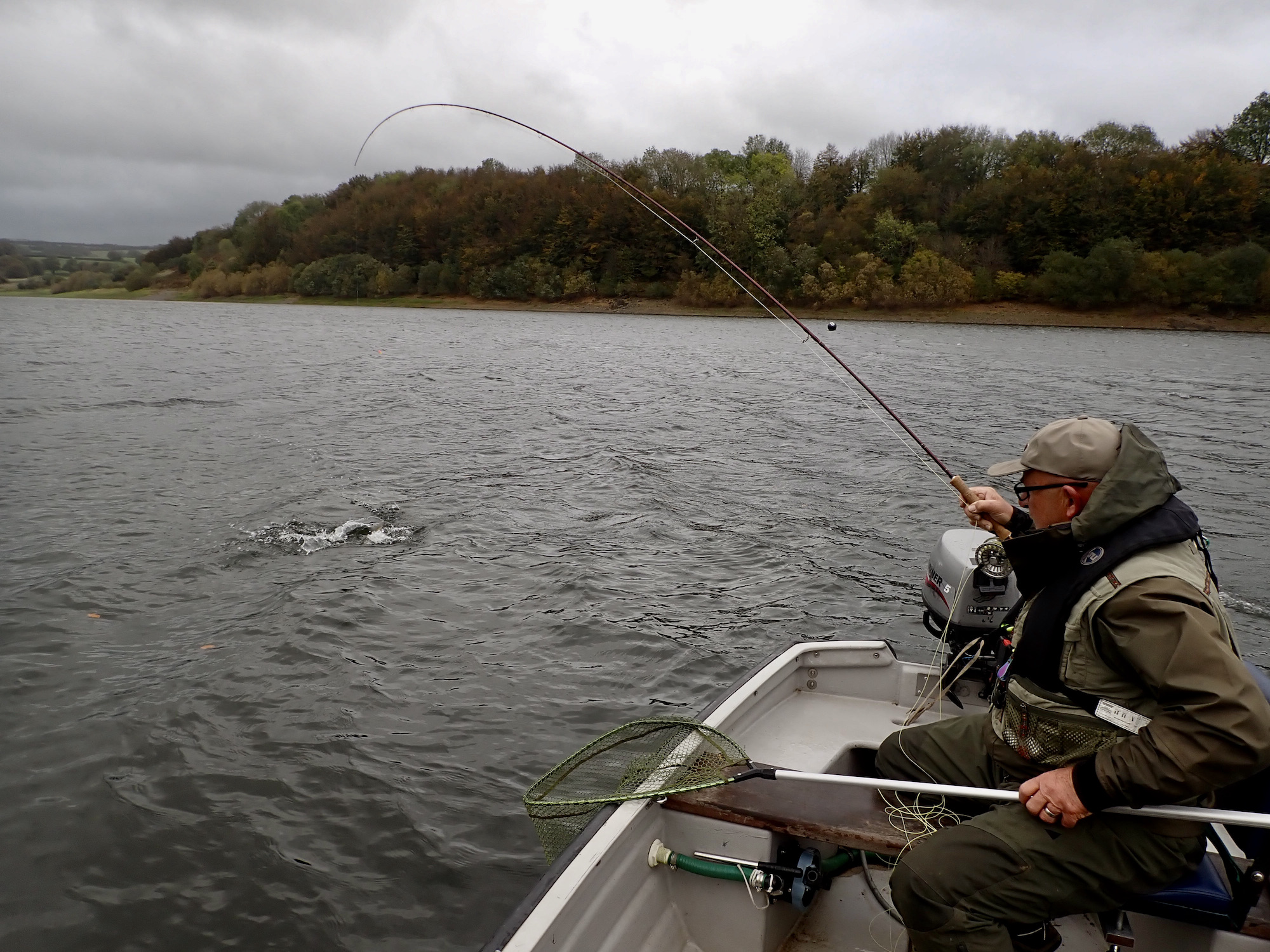
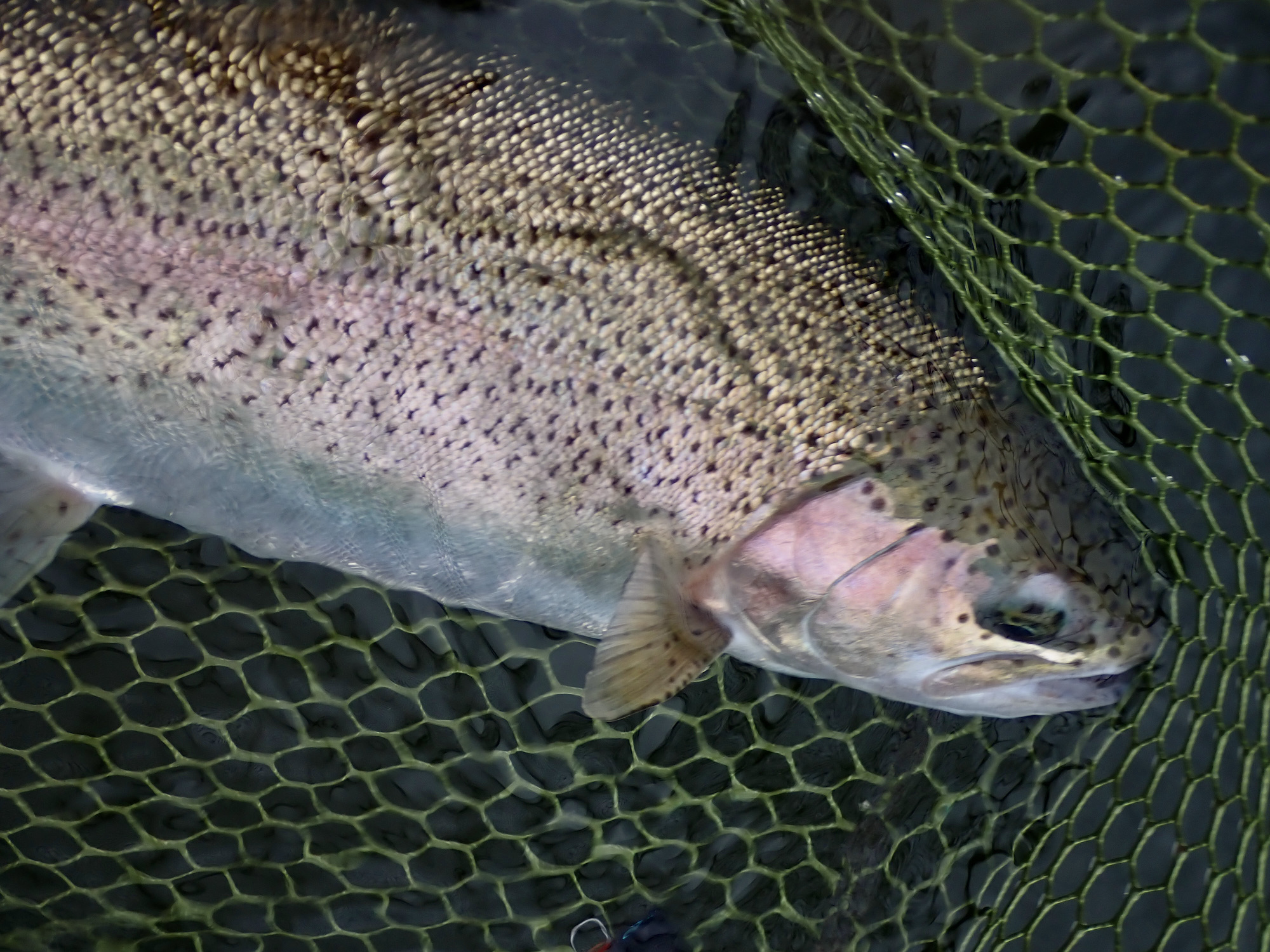
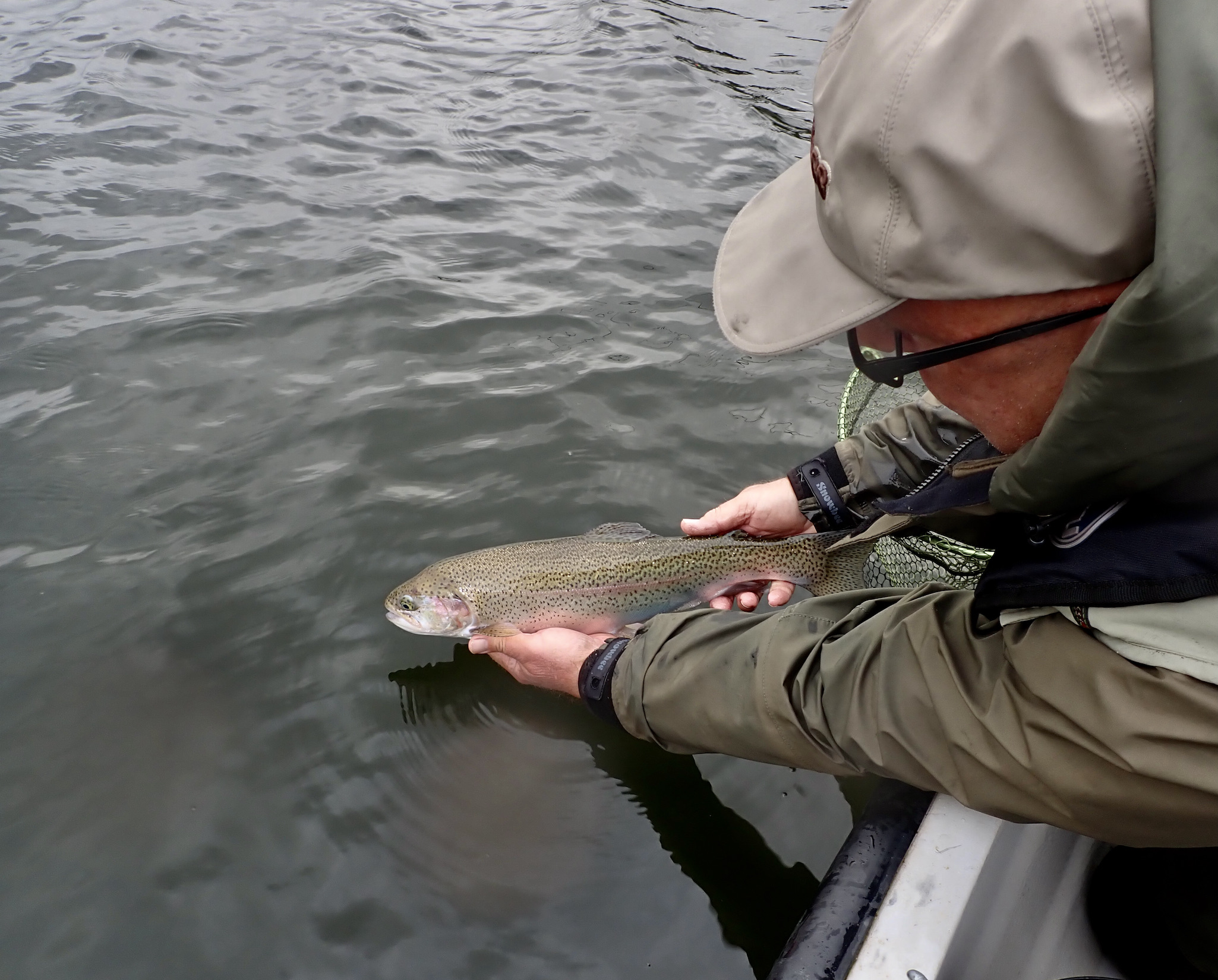
On the third drift a savage pull resulted in connection to a pristine rainbow to my rod estimated at well over four pounds.
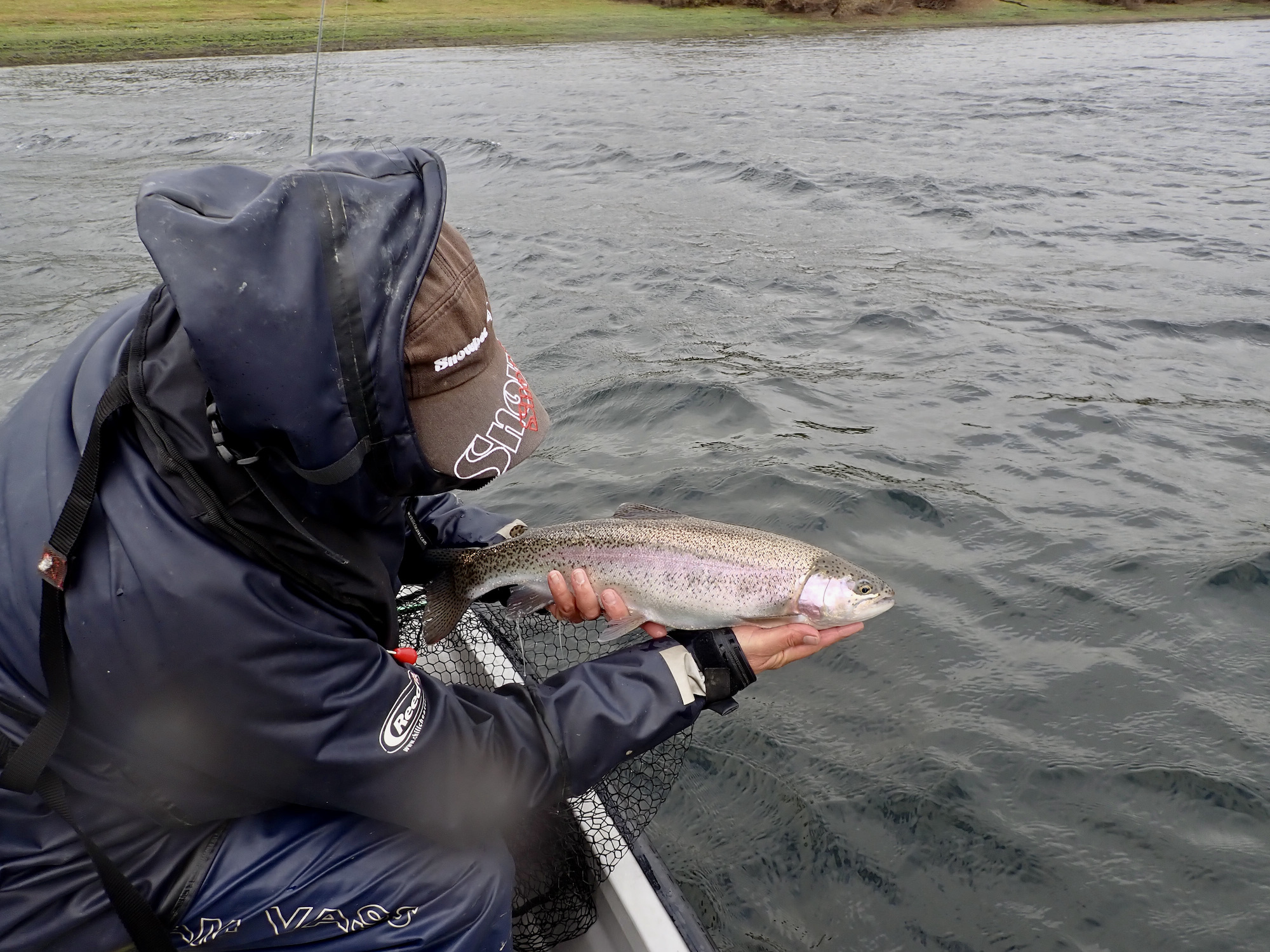
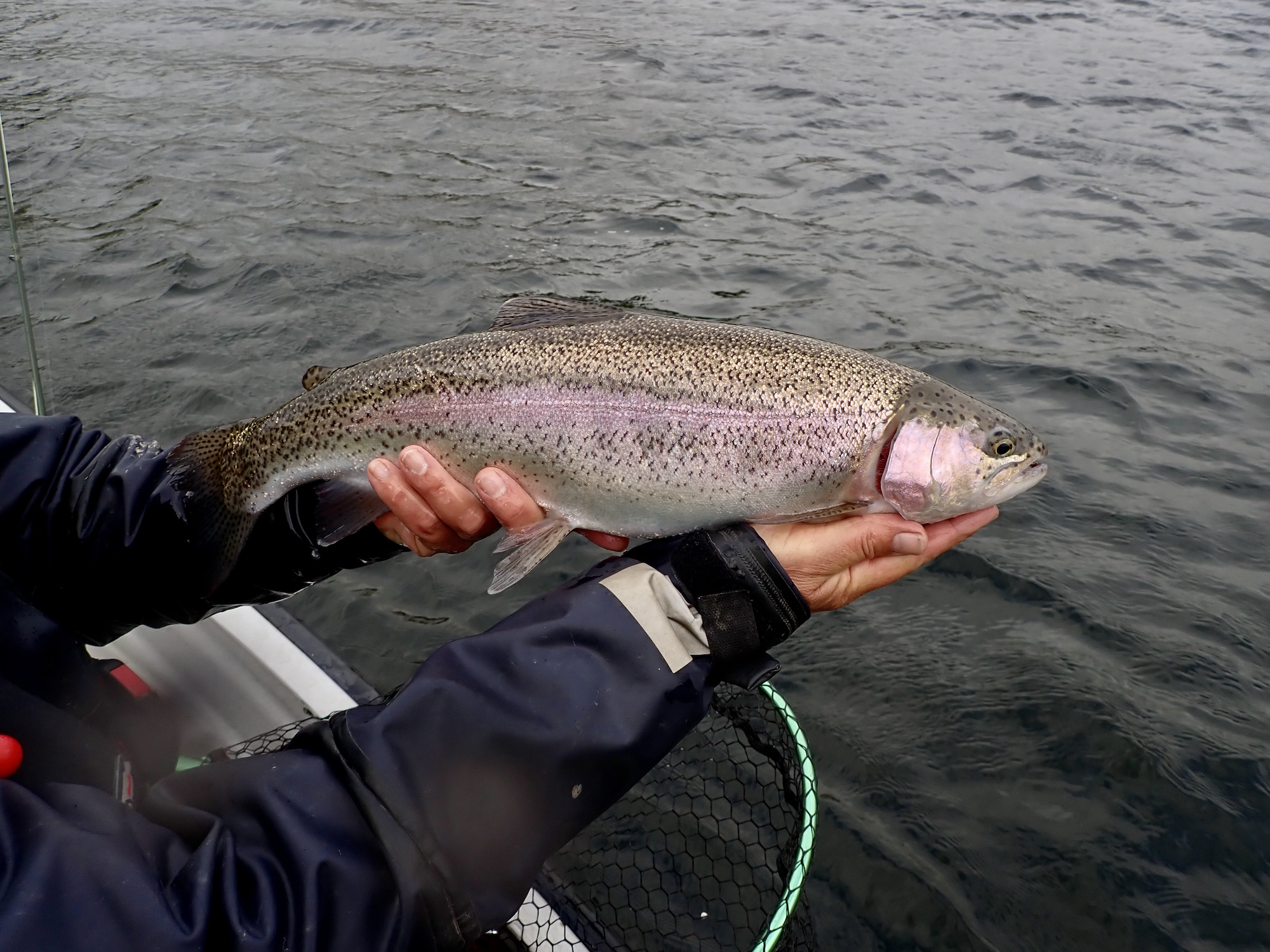
At this stage it looked like we were heading for a bumper day. But as the wind increased we decided to try our luck elsewhere on the lake. The wind was blasting into the shallows of Bessom’s and Rugg’s where we tried a couple of drifts before deciding to head up to the Upton Arm where we could enjoy more sheltered waters.
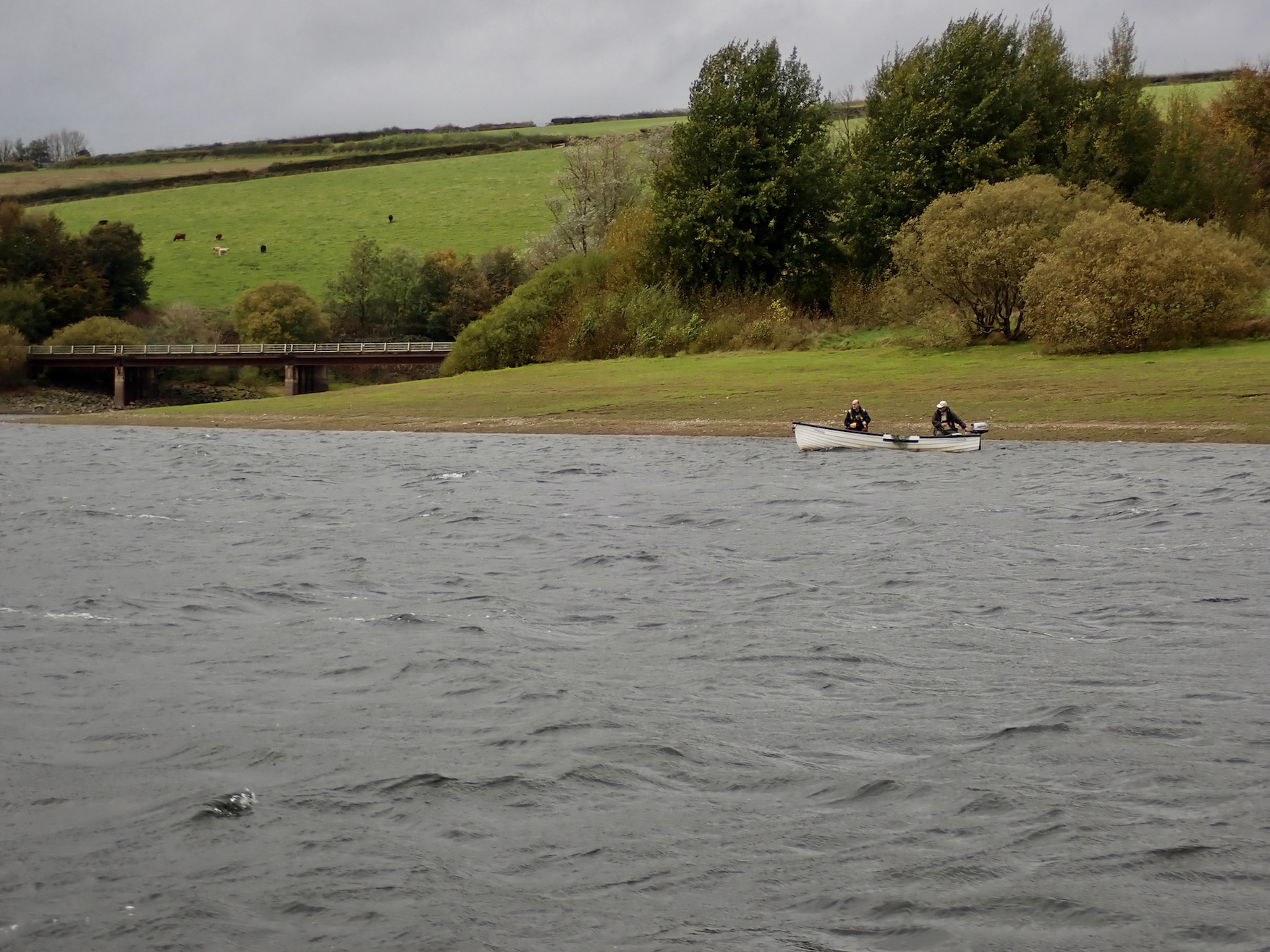
The wooded slopes of the Upton Arm were showing the distinctly Autumnal shades of golden browns. We drifted close to the shore where we tempted several beautiful wild browns each admired in the net before being released.
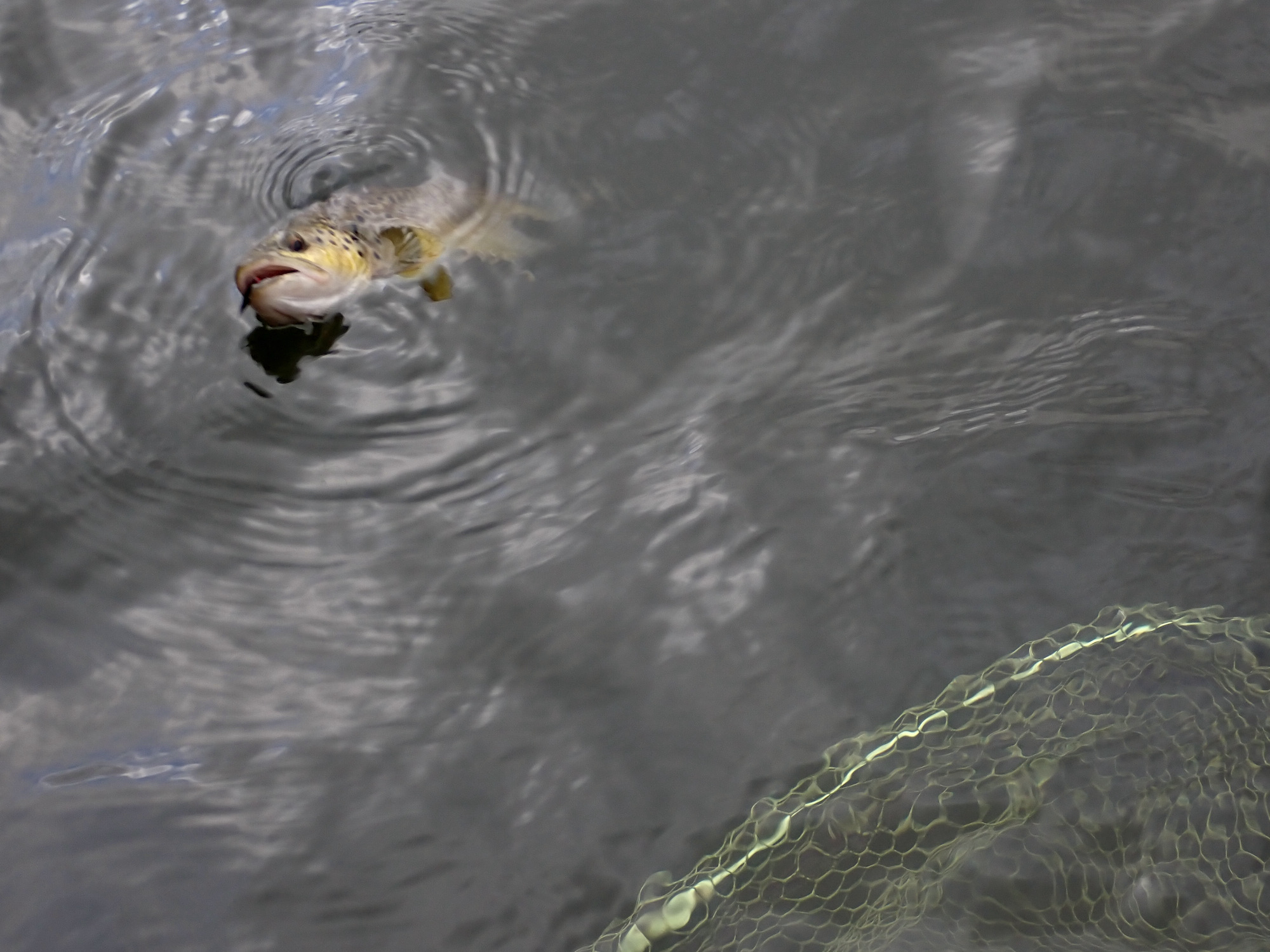
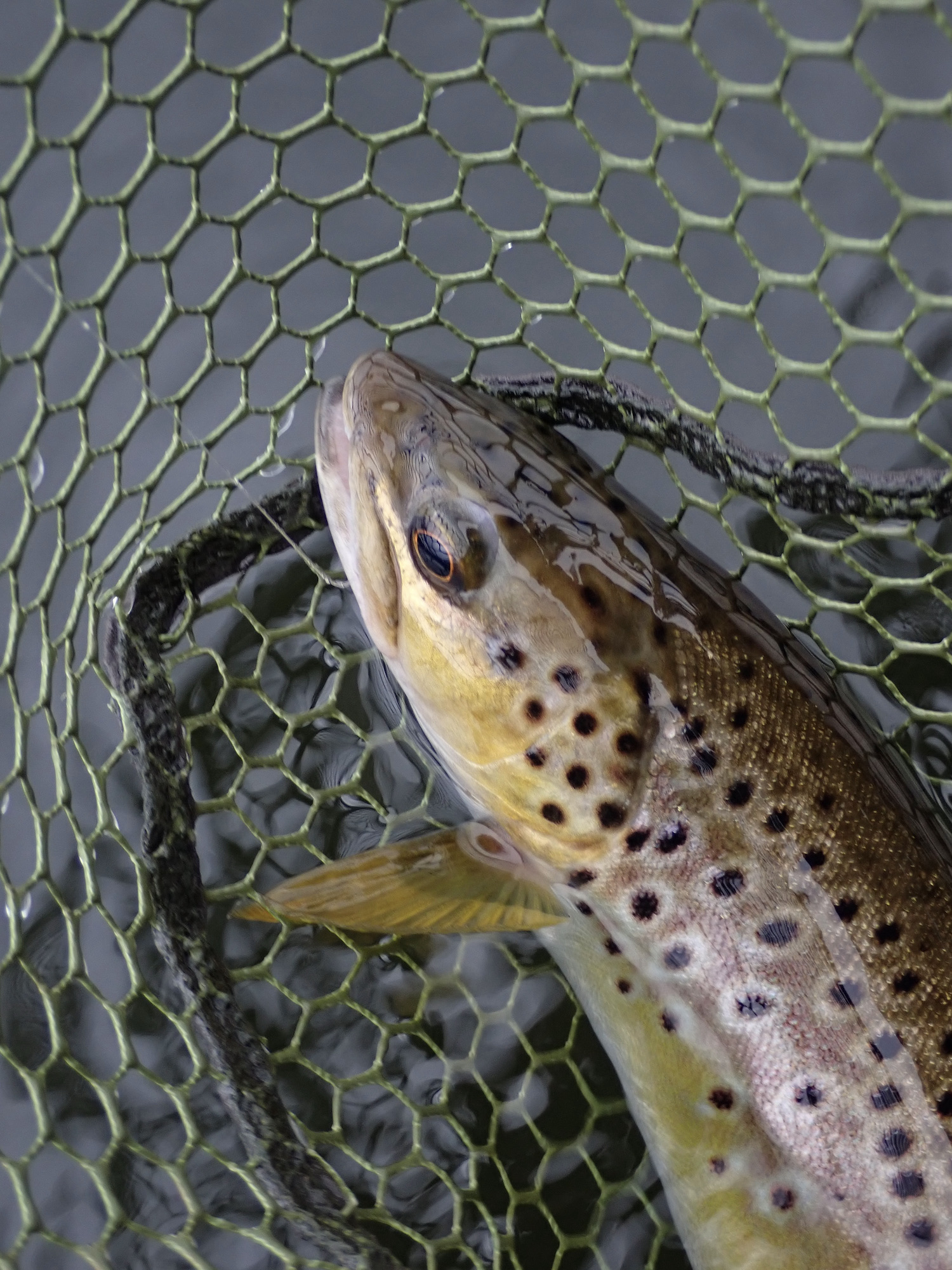
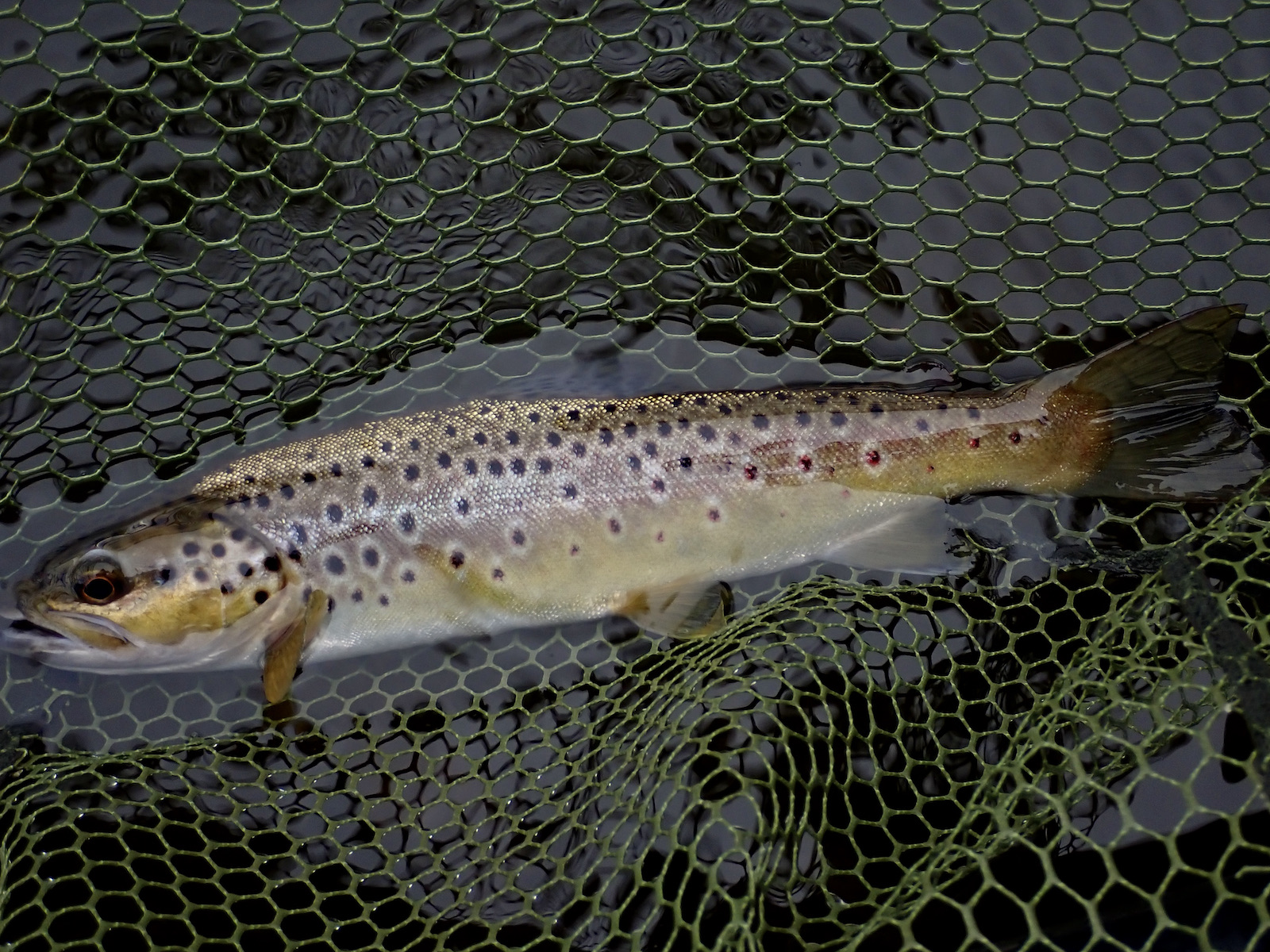
After a couple of hours without a rainbow we decided to head back into the wind. A drift across Cow Moor resulted in me hooking two good sized rainbows that came adrift after a lengthy and enjoyable scrap.
With the day ebbing away fast we headed back to the Narrows. A good sized rainbow teased as it followed the lure to the side of the boat before turning away at the last moment. This was repeated by a blue trout as we contemplated our last casts of the day.
Once again we had enjoyed a fantastic day with plenty of chances not converted into fish in the net. The strong wind had made everything hard work with difficult drifts, tangled lines and hard to find trout.
The joy of fishing these large waters is that they feel like truly wild lakes. The fish fight hard with their full tails and jewelled flanks. I hope to squeeze at least a couple more trips before the seasons end savouring the challenge of Wimbleball.
Briefing from Jamie Cook of the Angling Trust
The Angling Trust have been working hard to influence MPs to vote against the dumping of sewage into our rivers.
A personal view :-
The inadequate sewerage systems are a legacy of years of underfunding by water companies with much of the infrastructure outdated and unable to cope with the extent of development across the country. This is a complex issue and it is easy to blame the politicians and water companies in truth we all need to accept that it is us who produce the product and it is all of us who must foot the bill. The privatisation of the water companies in the 1980’s allowed the government to dodge the issues along with the successive governments that have followed. The need for housing in an ever growing world has exceeded the capacity of a sewerage system built for a much smaller population. The challenges of climate change and severe weather events add additional urgency to the situation. Anglers at the waters edge are well aware of the state of the nations rivers and have long campaigned against pollution with some success. It is essential that the wider public appreciate what is happening to the Rivers of North Devon and beyond.
Wayne Thomas
|


